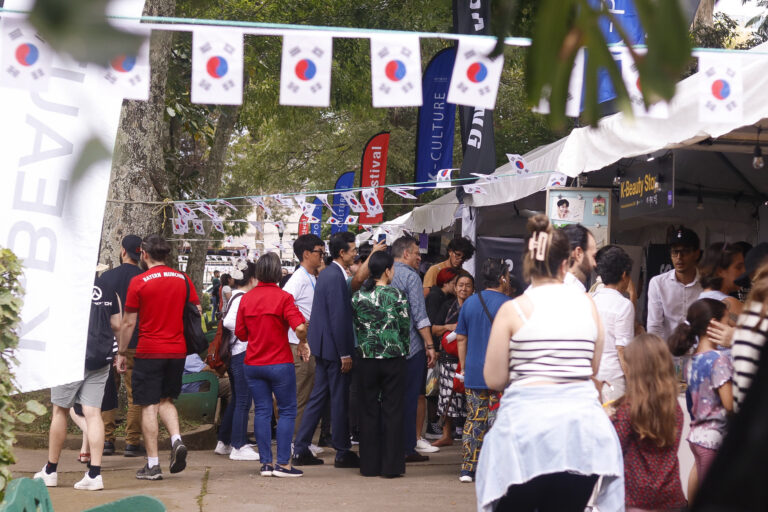At the heart of the Diquís Delta, in the southern Pacific region of Costa Rica, lies one of the greatest archaeological enigmas of the American continent: the famous stone spheres.
This year marks fifty years of formal research into these unique objects, internationally recognized for their geometric perfection and inscribed in 2014 on UNESCO’s World Heritage List (UNESCO – Diquís).
Despite decades of study, their precise origin, function, and cultural significance continue to be the subject of intense debate and new investigations.
1. Historical Context: The Discovery of the Spheres
a. When and How Were They Discovered?
The discovery of the spheres occurred during the 1930s and 1940s, as a consequence of deforestation and agricultural expansion activities driven by the United Fruit Company in the Diquís River delta. The land preparation work for banana plantations accidentally unearthed dozens of these perfectly sculpted stones.
The first records and systematic investigations were conducted by Doris Stone, a Costa Rican-American archaeologist who documented their existence in the area in 1943 (Stone, 1943). Later, in the 1950s, American archaeologist Samuel Lothrop, from Harvard’s Peabody Museum of Archaeology and Ethnology, conducted broader studies, published in his work Archaeology of the Diquís Delta, Costa Rica (Peabody Museum).
The early researchers linked the spheres to local pre-Columbian indigenous cultures, particularly those that flourished in Costa Rica’s southern Pacific between 500 A.D. and 1500 A.D., during the period known as Chiriquí.
b. Early Interpretations
Initial hypotheses about the spheres were diverse. Some researchers suggested they might have astronomical functions, while others interpreted them as decorative elements, symbols of power, or territorial markers.
Samuel Lothrop proposed that many spheres were associated with complex indigenous settlements, based on their distribution and alignments within the remains of ancient plazas and residential structures (Lothrop, 1963).
From the earliest decades after their discovery, the near-perfect precision of some spheres astonished the scientific community, given that they were carved without known metal tools or modern measuring systems.
These early interpretations laid the foundation for what remains one of the most fascinating archaeological fields of study in Costa Rica and Latin America.
2. Characteristics of the Spheres
a. Materials and Manufacturing Techniques
The Diquís Delta stone spheres were made mainly from three types of local rock:
- Granodiorite: a highly resistant intrusive igneous rock.
- Gabbro: a coarse-grained plutonic rock.
- Sandstone: used to a lesser extent, especially for smaller spheres or in areas where gabbro was unavailable.
According to studies by the National Museum of Costa Rica, manufacturing techniques included hammering, polishing, and rough shaping using abrasives.
Pre-Columbian artisans likely used harder stones as hammers and sand as an abrasive material to shape the rock blocks.
The most striking feature is the degree of spherical perfection achieved: some spheres deviate from a perfect sphere by only a few millimeters, a remarkable feat considering the absence of metal tools, precise measuring instruments, or known leveling systems.
The combination of geological knowledge, carving skills, and finishing techniques suggests that the indigenous societies that produced the spheres possessed a high level of social and technological organization for their time (Quintanilla, 2007).
b. Sizes and Distribution
The spheres vary considerably in size and weight:
- Diameter: ranging from about 10 centimeters to over 2.5 meters.
- Weight: some weighing up to 15 tons.
Today, more than 300 spheres have been recorded in Costa Rica, although many were moved from their original sites during the 20th century, complicating complete archaeological interpretation (UNESCO, 2014).
The main sites where spheres remain in their original context are:
- Finca 6: associated with residential and high-level social complexes.
- Batambal: where some spheres appear to form linear alignments.
- Grijalba-2: where evidence of urban planning is found alongside spheres.
- El Silencio: a site with a more scattered distribution of spheres.
These sites form part of the “Chiefdom Settlements with Stone Spheres of the Diquís,” inscribed on UNESCO’s World Heritage List in 2014 (UNESCO Diquís).
The distribution suggests that the spheres were not isolated artifacts but integrated elements of complex social, political, and symbolic systems of pre-Columbian indigenous societies.
3. Cultural Significance and Hypothetical Uses
a. Theories About Their Function
The original purpose of the stone spheres has been the subject of multiple archaeological hypotheses, though no definitive consensus exists to this day. The main theories propose that the spheres may have served the following functions:
Territorial Markers or Status Symbols:
According to research by the National Museum of Costa Rica, some spheres were found associated with public plazas and residential structures, suggesting they may have served as visible symbols of political or territorial power.
Astronomical Instruments or Ceremonial Alignments:
Recent investigations at the Finca 6 site have shown that some spheres are arranged in straight lines and geometric shapes that may coincide with significant astronomical events, such as solstices or equinoxes (Geurds et al., 2019).
Ceremonial or Spiritual Objects:
It has been proposed that the spheres represented indigenous cosmological concepts such as the sun, perfection, or the cycles of life and death, corresponding with the worldview of the region’s pre-Columbian peoples.
b. The Debate on Their Symbolism
The interpretation of the symbolism of the spheres continues to evolve as new findings and scientific methods, such as 3D scanning and soil analysis, allow a better understanding of their original context.
Recent research led by Dr. Francisco Corrales Ulloa, archaeologist at the National Museum of Costa Rica, suggests that the spherical perfection could have had profound symbolic value related to concepts of social and cosmological order, beyond simple decorative purposes (Corrales Ulloa, National Museum CR).
Furthermore, current indigenous peoples of Costa Rica’s southern Pacific, such as the Bribri, Boruca, and Térraba, although culturally distinct from the spheres’ original creators, have maintained oral narratives about sacred stones, reinforcing the possibility that these objects held ancestral spiritual significance.
The absence of inscriptions or figurative representations complicates a definitive interpretation, but the spheres remain extraordinary symbols of the social organization, engineering, and spirituality of Costa Rica’s pre-Columbian peoples.
4. UNESCO Recognition
a. World Heritage Inscription
In 2014, the Chiefdom Settlements with Stone Spheres of the Diquís were inscribed on UNESCO’s World Heritage List, marking a milestone for Costa Rican archaeology and for the preservation of pre-Columbian heritage in Latin America (UNESCO – Diquís).
The inscription was based on the following criteria:
- They represent an exceptional testimony of the complex social, economic, and political structures of Costa Rica’s pre-Columbian indigenous societies.
- They are outstanding examples of technical skill in stonework, achieving highly precise spherical forms without the use of metal tools.
- They reflect the organization of social and ceremonial space in ancient Diquís Delta settlements.
This designation not only recognizes the cultural and archaeological importance of the spheres but also ensures Costa Rica’s commitment to their long-term conservation and protection, in line with the standards of the 1972 World Heritage Convention.
b. Current Protection and Management
The management of the stone sphere sites is under the responsibility of the National Museum of Costa Rica, which has developed conservation, restoration, and education plans around these cultural assets (National Museum CR).
Some of the most relevant actions include:
- Physical protection of sites through fencing, signage, and controlled access.
- Archaeological monitoring programs to prevent looting and vandalism.
- Educational projects aimed at local communities and national and international visitors.
- Ongoing scientific research to deepen knowledge of the spheres and their cultural context.
The Finca 6 Visitor Center, open to the public, offers interpretive tours where visitors can appreciate in situ spheres, archaeological alignments, and exhibits about the societies that produced them.
Thanks to these efforts, Costa Rica has not only managed to preserve this invaluable legacy but also integrate it as a fundamental part of its contemporary cultural identity.
5. Conservation Status and Challenges
The conservation of the Diquís stone spheres has faced significant challenges since their discovery to the present.
a. Past Threats
During the 20th century, before formal protection, many spheres were:
- Moved from their original locations to private estates, gardens, parks, and public institutions.
- Looted in search of supposed treasures hidden inside, fueled by local myths.
- Damaged by intensive agricultural activities, such as banana and oil palm cultivation, which altered the archaeological contexts.
The loss of archaeological context is one of the greatest damages, as it impedes the ability to interpret the original purpose of many spheres (UNESCO Diquís).
b. Current Conservation Measures
Since their inscription on the World Heritage List, Costa Rican authorities, led by the National Museum of Costa Rica, have implemented measures to preserve this heritage:
- Restoration of some damaged spheres.
- Controlled relocation programs when conservation conditions require it.
- Creation of interpretive trails allowing controlled public access while minimizing deterioration risks.
- Satellite and georeferenced monitoring to prevent unauthorized movements.
Community education has also been key to reducing looting and fostering a sense of cultural belonging toward the spheres among local populations.
Nevertheless, experts agree that ongoing efforts are needed to combat latent threats such as climate change, which can affect soil stability, and isolated acts of vandalism (ICOMOS Costa Rica).
6. Recent Advances in Research
a. New Technologies Applied
The use of advanced technologies has revolutionized the study of the spheres in recent years:
- LIDAR (Light Detection and Ranging): Enabled the identification of ancient settlement patterns hidden beneath vegetation in the Diquís Delta, revealing complex pre-Columbian social and urban structures (Fisher et al., 2017).
- 3D Scans of the Spheres: Document their conservation state and facilitate studies of spatial alignments and deformations.
- Soil Analyses: To identify ritual or funerary contexts associated with some spheres’ placement.
b. Recent Interpretations
New research led by the Diquís Archaeological Project (PAD) has strengthened the hypothesis that the spheres were part of highly organized ceremonial centers, where their placement followed patterns of political power and territorial control.
Recent studies also highlight that:
- Some alignments of spheres are oriented according to specific astronomical phenomena.
- Sphere production was not an isolated task but a communal enterprise requiring social organization, geological knowledge, and likely labor specialization.
This multidisciplinary approach has allowed a deeper understanding that the spheres are not isolated artifacts but integral elements of complex societies that inhabited the Diquís Delta between the 6th and 16th centuries A.D.
Fifty years after the beginning of formal studies on the Diquís Stone Spheres, their mystery continues to fascinate both archaeologists and the general public. These impressive objects not only attest to the technological and artistic achievements of Costa Rica’s pre-Columbian indigenous societies but also reflect a profound social, symbolic, and possibly cosmological complexity.
The inscription of the chiefdom settlements with spheres on UNESCO’s World Heritage List in 2014 reaffirmed their universal importance and the need for active protection. Thanks to the efforts of institutions such as the National Museum of Costa Rica, the Diquís Archaeological Project (PAD), and international cooperation, we now have better technological and methodological tools to investigate their original context, understand their function, and ensure their preservation for future generations.
However, the conservation of the spheres and their cultural landscape faces ongoing challenges that require a continuous combination of scientific research, community education, and sustainable management policies. The still-unfinished story of the Diquís spheres reminds us of the importance of looking at the past with respect and rigor to build a fuller and fairer narrative about the indigenous cultures that shaped our shared heritage.
In the coming years, new research—especially research that integrates the voices and perspectives of current indigenous communities—will be essential to continue deciphering the secrets these silent stones still hold.


















